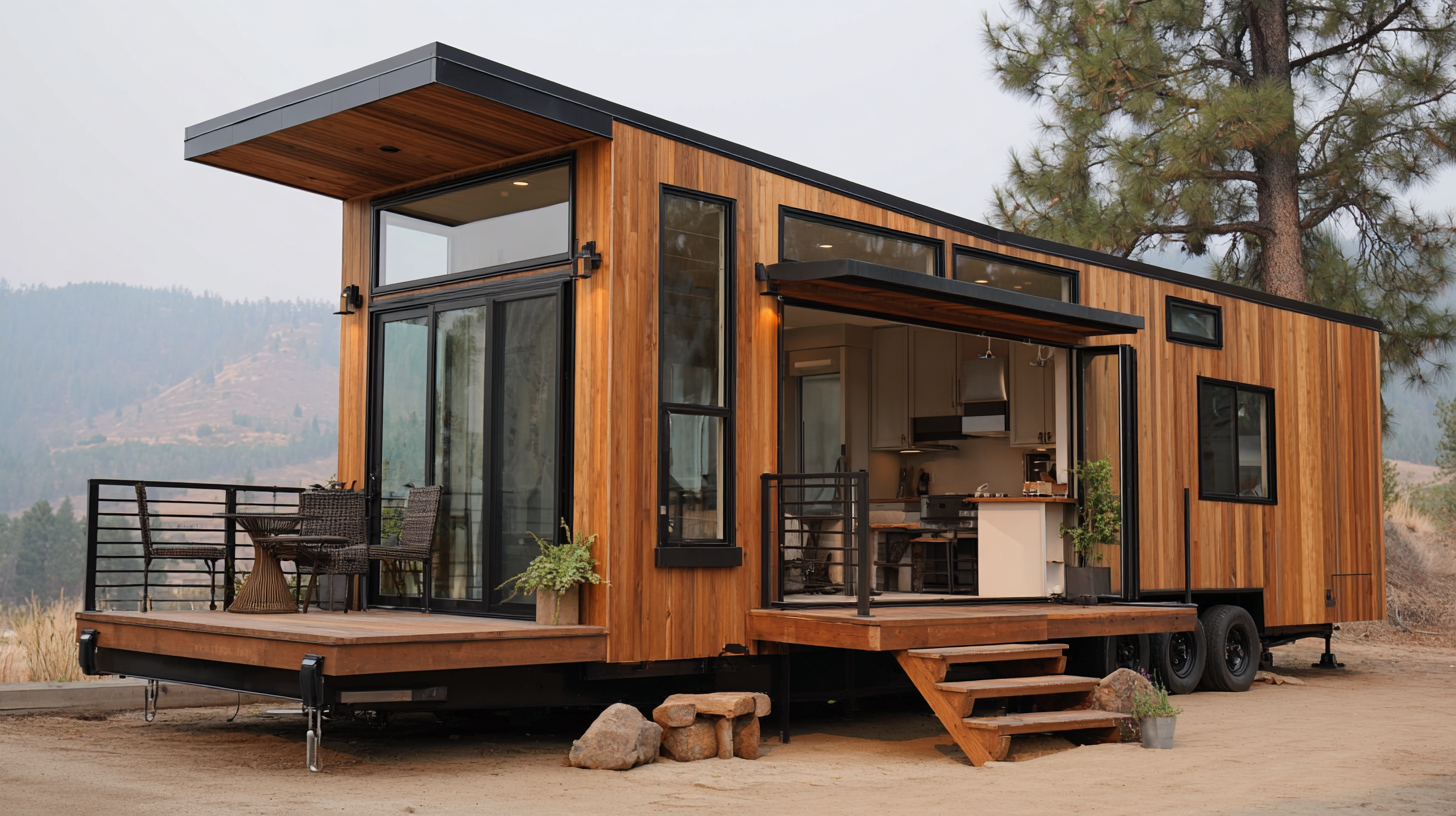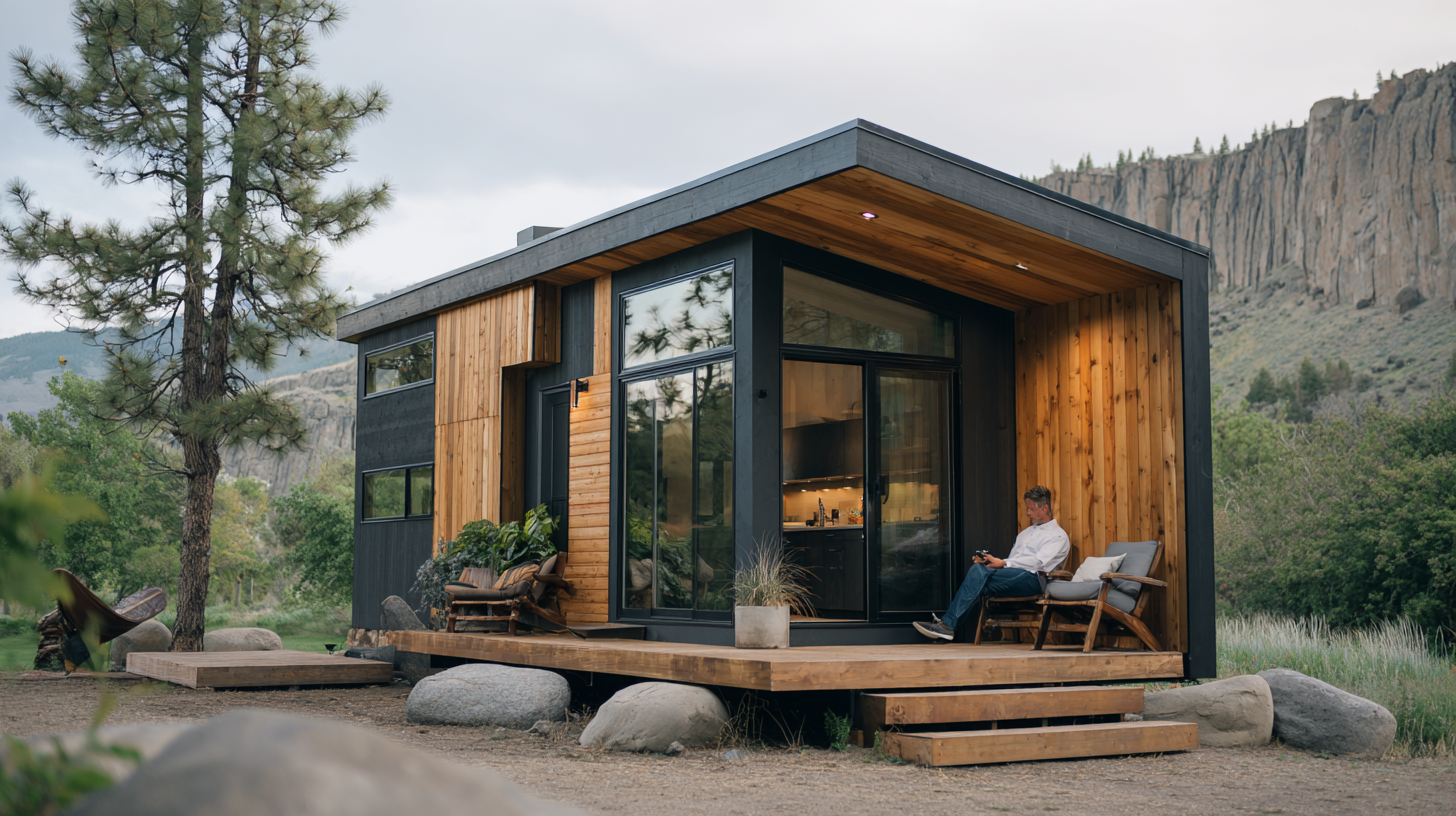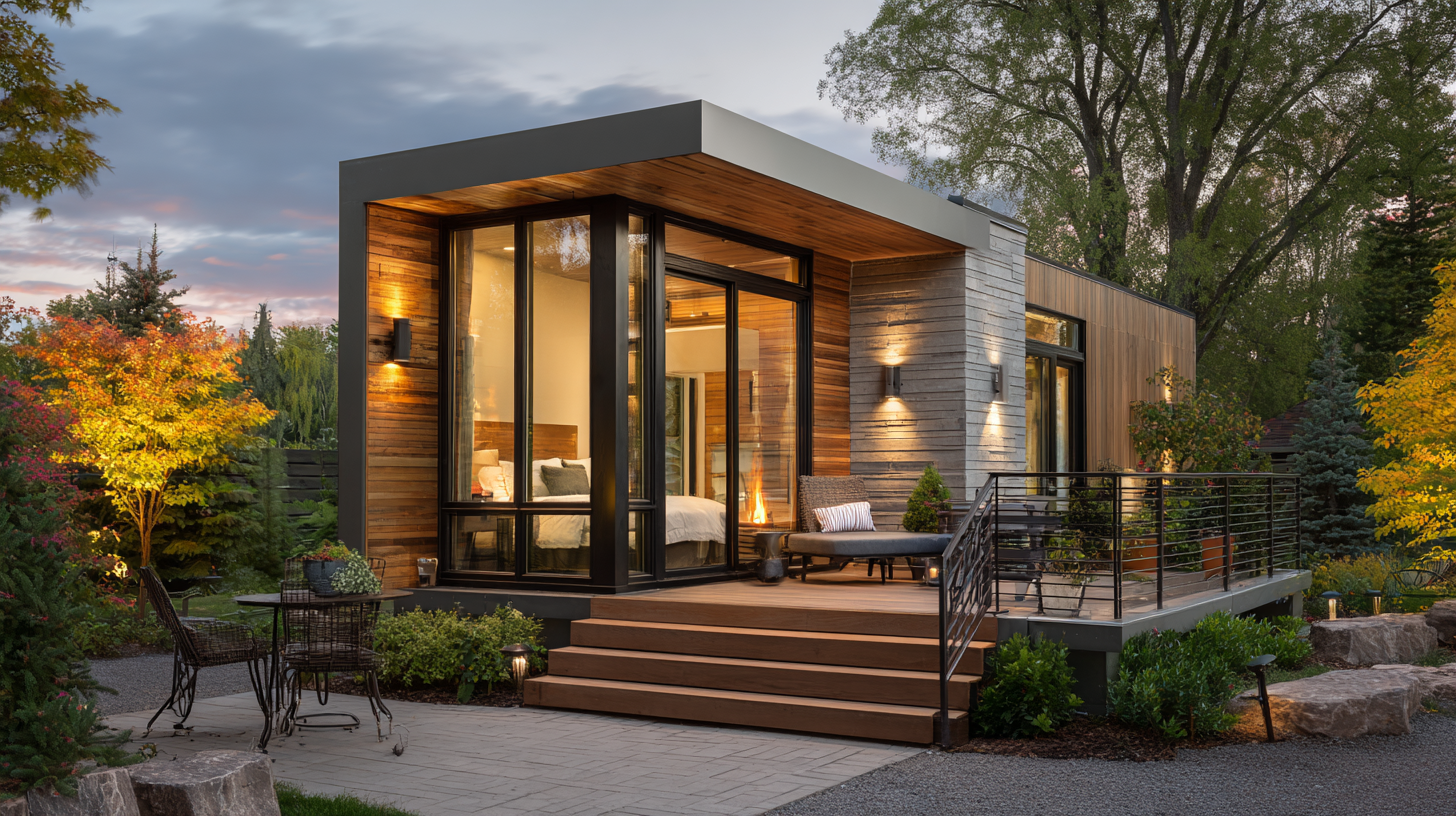The concept of housing has evolved significantly in recent years, with prefab tiny houses emerging as a standout solution in the realm of sustainable living. These innovative homes, built off-site and assembled quickly, offer a compelling alternative to traditional construction methods, boasting up to 50% faster construction times.

As urban populations grow and the demand for affordable housing intensifies, prefab tiny houses present a pragmatic answer to pressing housing challenges. They not only minimize construction waste but also utilize eco-friendly materials and designs, promoting a smaller carbon footprint. Furthermore, the flexibility of these compact dwellings allows for creative living spaces that adapt to various lifestyles while maintaining essential comforts.
This exploration of prefab tiny houses highlights their potential to reshape our approach to housing, offering a viable path toward sustainability and efficiency in the construction industry.
The advent of prefabricated tiny houses presents a transformative solution in the housing sector, particularly when considering the significant impact of prefabrication on production times and costs. Recent reports indicate that using prefabricated components can reduce construction timelines by up to 50%. A study from the National Association of Home Builders (NAHB) found that prefabrication can streamline processes by allowing multiple construction phases to occur simultaneously, resulting in expedited project completion. This efficiency not only alleviates the housing crisis but also reduces labor costs that have surged in traditional construction environments.
Moreover, the cost-effectiveness of prefab homes is equally impressive. The McKinsey Global Institute estimates that adopting modern construction techniques could lead to a 20% reduction in project costs. This affordability makes prefab tiny houses an attractive option for first-time homeowners and those seeking sustainable living solutions. The use of efficient supply chain management, combined with reduced waste production, further enhances the overall value proposition of prefab housing.
Tips: When considering prefab homes, focus on designs that maximize space and sustainability features. Research local regulations to ensure compliance with zoning laws. Lastly, connect with reputable manufacturers who can provide quality assurance on construction materials and processes.
The trend of prefab tiny houses is rapidly gaining traction as a sustainable housing solution, significantly contributing to reducing our carbon footprint and minimizing waste. Tiny houses, typically ranging from 100 to 400 square feet, use far fewer resources in both construction and energy consumption. According to the National Association of Home Builders, a tiny house can consume 60% less energy compared to a standard home, which translates to reduced greenhouse gas emissions over the lifespan of the structure. Additionally, the smaller size naturally leads to less waste during construction, with several reports indicating that tiny house projects generate 50% less waste than traditional builds.
**Tips for Sustainable Living in Tiny Houses:**
- Maximize insulation to enhance energy efficiency, which can cut heating and cooling costs.
- Implement rainwater harvesting systems to further reduce reliance on municipal water systems.
- Utilize reclaimed or recycled materials in the construction process, promoting a circular economy and minimizing the impact on landfills.
The adoption of tiny houses not only supports a sustainable lifestyle but also encourages a minimalist approach to living, further decreasing overall consumption. Studies show that individuals in tiny homes tend to purchase fewer material goods and create less waste, fostering a culture of sustainability. As prefab tiny houses become more popular, their contribution to a greener future environments becomes evident.
| Benefit | Description | Impact on Carbon Footprint (%) | Waste Reduction (Tons) | Construction Time Savings (Days) |
|---|---|---|---|---|
| Reduced Energy Use | Smaller homes require less energy for heating and cooling. | 30% | 1.5 | 10 |
| Material Efficiency | Prefabricated design minimizes material waste during construction. | 25% | 2 | 15 |
| Sustainable Materials | Utilizes recycled and sustainably sourced materials. | 20% | 1 | 12 |
| Speed of Construction | Prefab homes can be assembled 50% faster than traditional homes. | 15% | 3 | 25 |
| Affordability | Lower costs result in accessible housing options. | 10% | 0.5 | 8 |
The rising popularity of prefab tiny homes in urban areas reflects a significant shift in housing preferences, driven by a blend of sustainability and efficiency. As more individuals seek affordable and environmentally friendly living options, the prefab tiny house market is expected to grow rapidly. With construction times that are 50% faster than traditional homes, these innovative structures offer a practical solution for urban dwellers facing space constraints.
Market trends suggest that this surge in demand aligns with broader movements towards sustainable construction practices. The global building market is projected to reach a value of $59.9 billion by 2025, indicating strong growth potential. Additionally, the cross-laminated timber market is anticipated to expand significantly, showcasing a growing interest in sustainable materials within the construction industry. As urban areas continue to evolve, the adoption of prefab tiny homes is likely to play a crucial role in meeting the challenges of housing shortages while promoting eco-friendly living.
This chart illustrates the growth in the popularity of prefab tiny houses over a five-year period from 2018 to 2023. The data indicates a significant increase in units sold each year, highlighting the trend towards sustainable and efficient housing solutions in urban areas.
 The growing interest in prefab tiny houses as a sustainable housing solution has sparked new financing and investment opportunities in the sector. With construction times reduced by nearly 50%, the modular housing market is poised for significant growth. The Canadian government's commitment of $1.2 billion to enhance the forest sector and expand mass timber usage is a promising sign for prefab builders. The allocation includes $700 million in loan guarantees and $500 million for new forest programs aimed at boosting competitiveness and domestic production, directly benefiting modular housing initiatives.
The growing interest in prefab tiny houses as a sustainable housing solution has sparked new financing and investment opportunities in the sector. With construction times reduced by nearly 50%, the modular housing market is poised for significant growth. The Canadian government's commitment of $1.2 billion to enhance the forest sector and expand mass timber usage is a promising sign for prefab builders. The allocation includes $700 million in loan guarantees and $500 million for new forest programs aimed at boosting competitiveness and domestic production, directly benefiting modular housing initiatives.
In light of rising housing demands, stakeholders are looking for innovative financing avenues. The Modular Builders sector has indicated that, with adequate government support, they can scale production to meet housing needs. As reported, previous investments in research and development have been crucial in unlocking potential in modular construction. This trend suggests a ripe environment for investors, as growing urban populations create an increasing demand for efficient and sustainable housing solutions.
Tip: For those considering investing in the prefab housing space, keep an eye on government policies that encourage innovation and sustainability. Understanding the dynamics of emerging technologies in modular construction can also provide insights into which companies are best positioned for growth. As the market evolves, industry insights might reveal hidden opportunities in the modular housing sector.
The trend of prefab tiny houses is gaining momentum globally, showcasing a sustainable housing solution that not only reduces the construction timeline by up to 50% but also minimizes environmental impact. According to a report by the National Association of Home Builders, prefabricated homes can save significant costs on labor and materials, translating to a more affordable option for homeowners. Case studies from countries like Sweden and Japan highlight how municipalities are incorporating these tiny homes into urban planning, addressing issues such as housing shortages and rising living costs while promoting eco-friendly lifestyles.
As more people turn to this innovative housing model, several municipalities in the U.S. and Europe have successfully implemented prefab tiny house communities. For instance, Austin, Texas, has seen the development of projects that align with city goals to combat homelessness. These initiatives not only provide rapid housing solutions but also foster community engagement and sustainability.
Tips for Considering a Prefab Tiny House:




